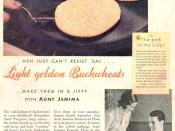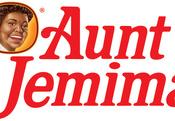Analysis
Consumers are subjected to race, ethnicity, and gender biases whether they are shopping for food, clothing, or toys. Minority and multicultural groups have been used to sell products for centuries. While conducting my supermarket field research, I came across many historical icons that have been subjected to discrimination to sell American goods. The most apparent ethnic image that stuck with me was the African American Cream of Wheat chef. In the early 1900's he is seen in numerous ads and posters illustrated as a slave. This image of a smiling black servant, appealed to it's white customers who enjoyed the illusion of southern hospitality. Along with attaining a lesson in race and ethnicity, consumers are also exposed to gender differentiated marketing. I visited 'Toys"R"Us' to explore the gender gap in the toy market. Here I found a strict distinction and separation of the sexes. In the paragraphs that follow I will take a closer look at how marketing techniques and historical icons shape our American culture.
Advertising schemes have evolved over the years to keep up with the current social issues and minimize racial tensions. In the Kern-Foxworth essay, he describes how Aunt Jemima's image has developed over the years. In her debut in 1889, she appeared as a smiling, over weight, African American older woman, wearing a checkered bandana. This image symbolized a deep white American fantasy for black servitude. Advertisers used this theme to market a "slave in a box". Aunt Jemima's image was altered during the Civil Rights Movement. She lost 50 lbs and traded her bandanna for a headband. During the Civil War, Black Nationalism arose, and Aunt Jemima's image changed to resemble more of an executive secretary, rather than a slave. In 1989 her image transformed to reflect a "woman of...


